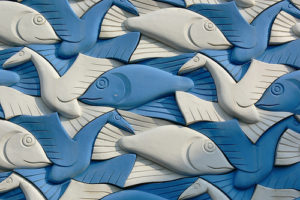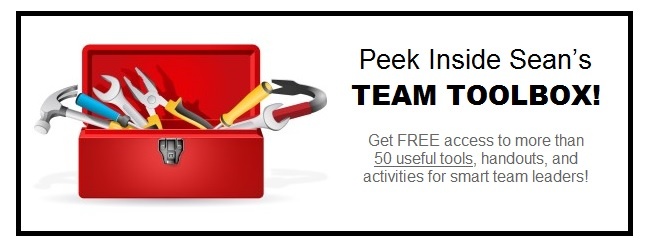 In my book, Rapid Teamwork, I share the five ingredients that all GREAT teams share. One of those is setting clear expectations about team roles.
In my book, Rapid Teamwork, I share the five ingredients that all GREAT teams share. One of those is setting clear expectations about team roles.
Sometimes the toughest challenge for otherwise committed teammates is understanding and accepting their role.
And the best illustrations of teams fitting together and accepting roles are something called tessellations.
A tessellation is a repeated pattern of a closed shape, arrayed one after the next, with no gaps or overlaps. M.C. Escher is famous for some of his drawings that use tessellations, but at their simplest, a grid of squares or a pattern of interlocking hexagon tiles on a bathroom floor are tessellations.
But this mathematical concept is interestingly like what you want to occur when building successful teams. In constructing teams, you are likely aware of the need to adapt to different personalities and adapt your behaviors and skills to fill in any gaps the team may have.
In basketball, if your team doesn’t have any player over 6’2”, somebody will need to adapt their skills and play post – or the team will need to adapt itself to a new offensive system.
For ANY team to successfully accomplish its goals, each member should be adaptable, ready to interact with other members at any time. The team is an evolving collection of puzzle pieces… and you must adapt to where your skills fit in best.
The “team-building process” is one of learning to identify the shape of your colleagues and adapt yours to accommodate them (and vice versa).
Many want to win, but are unwilling to adapt to team needs and pride keeps them from success!
This starts with YOU –
Do you know your strengths, and adapt them to team needs?
When somebody asks what your role is on the team, do your shoulders go up, to illustrate your confusion? If so, your playing time or your team success rate will soon go down…
Another lesson tessellations offer is that you can only adapt or change your puzzle piece!
When you look at others, do you feel that THEY are the problem?
Sometimes, when we convince ourselves that they are lazy or unhelpful, we are only trying to reinforce our own feeling of value and defend our unwillingness to change…
Instead of thinking of yourself and what you need / want, focus on the wants and needs of others and the benefits they will receive through team success… And by choosing to adapt selflessly to be what the team needs, you give others on your team an example to follow…
PEOPLE are not bad or lazy, they are simply often motivated by a different perspective – and need to be understood and appreciated.
If you can help them see how their behavior may be negatively affecting the team’s ability to reach its goals, they may be more willing to join you and adapt their skills as well.
Roles demand that we recognize our strengths, but accept that we cannot do everything well – You can only do your thing well. And teamwork is the result of others doing the same…
Your piece of puzzle is important – but successful teams are made up of people who appreciate others for being the piece of the puzzle they need to be to complete the tessellation…
Michael Jordan was an amazing athlete – who said “I have no individual goals.”
He also said, “We play for one reason and that’s to win the title… There are plenty of teams in every sport that have great players and will never win titles… Most times, these players aren’t willing to sacrifice for the greater good of the team. The funny thing is, in the end, their unwillingness to sacrifice only makes individual goals more difficult to achieve.”
Many people want to win, but some want to succeed only on their terms…
Think of all the great players throughout history who never held a championship trophy because their ego wouldn’t allow them to become a small part of something larger and more significant than themselves…
Great teammates let go of the pride that keeps them from fitting together well.
Great teammates see the big picture – and adapt to the personalities and talent around them.
Early in the season, if the team is not fitting together as well as it should – great teammates take responsibility for communicating the importance of roles and helping others identify where they fit into the tessellation…
If you are interested in a keynote on teamwork, or if your group would benefit from stronger relationships and improved morale from a fun team building event contact Sean to discuss how he can help you develop more effetive leaders and transform your group into a more productive team.

